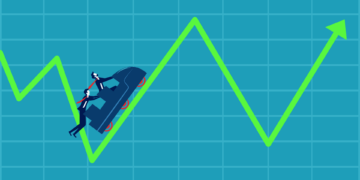How to Choose the Best Investment Fund for Your Risk Profile

Understanding Your Investment Fund Options
Choosing the right investment fund can indeed be a daunting task given the wide range of options available. However, understanding your risk profile is key to making informed decisions that align with your financial goals. The concept of a risk profile helps in determining which investment fund is best suited to meet your personal and financial needs.
Defining Your Risk Profile
Your risk profile essentially reflects your willingness and ability to take risks when investing. It’s informed by several important factors:
- Investment goals: What are you saving for? If your goal is long-term, such as retirement or funding your child’s education, you might consider investing in funds that take on more risk for potentially higher returns. For a shorter-term goal, like saving for a house deposit, you might prefer more stable, low-risk investments to protect your savings.
- Time horizon: The duration you can keep your money invested plays a significant role in your risk tolerance. If you can invest for a longer time frame, you may be able to weather market downturns, allowing you to invest in riskier equities that offer the potential for growth. Conversely, if you need access to your funds within a few years, a more conservative approach may be prudent.
- Emotional tolerance: How do you handle market fluctuations emotionally? Some investors can tolerate seeing their investments fluctuate in the short term, perhaps because they have a solid long-term strategy or they’re less emotionally attached to money. Others might become nervous during market dips, which could affect their investment decisions.
Key Features of Investment Funds
Investment funds come in various forms and identifying the features that matter to you can significantly aid in your selection process. Consider the following aspects:
- Type of Fund: Funds can be broadly categorized into equity, bond, or mixed funds. Equity funds invest primarily in stocks, providing opportunities for growth but also greater volatility. Bond funds focus on fixed-income investments and tend to be more stable but typically offer lower returns. Mixed funds offer a blend, providing diversification that can cushion against market fluctuations.
- Management Style: There are primarily two management styles: active and passive. Active funds involve fund managers making decisions about how to invest the money with the aim of outperforming standard benchmarks; this can come with higher fees. In contrast, passive funds, such as index funds, aim to replicate market performance and typically carry lower fees.
- Fees: Always be aware of how fees can impact your investment. Look closely at the expense ratios—these cover the fund’s operating costs. Additionally, there may be sales charges or other fees that can eat into your returns; understanding these will help you make a more educated choice.
By thoughtfully evaluating these elements, you’ll empower yourself to locate a fund that harmonizes with your financial aspirations and provides peace of mind. Remember, investing isn’t just about growing your money; it’s about finding the right balance that fits your personal circumstances and goals. Seeking advice from a financial advisor can also be beneficial in navigating this intricate landscape.
Assessing Factors That Influence Your Risk Profile
Understanding your risk profile is a multifaceted journey that requires careful consideration of several personal factors. Recognising these aspects will empower you to select the best investment fund that aligns with your financial goals and comfort level with risk. Here are some essential elements that contribute to your risk profile:
- Financial Situation: Your current financial health plays a crucial role in determining your risk tolerance. If you have a stable income, low debt, and ample savings, you might be more inclined to take on higher risks. Conversely, if you have limited disposable income or substantial financial obligations, it may be wise to adopt a more cautious approach. Having an emergency fund in place can provide a safety net, allowing you to invest with confidence.
- Investment Knowledge: Your familiarity with investment dynamics can influence your comfort with risk. If you have prior experience and a good understanding of different asset classes, you may feel more comfortable with investments that come with higher volatility. On the other hand, if you’re new to investing, you may prefer simpler, lower-risk options until you build your knowledge and confidence.
- Market Conditions: While your personal risk profile is crucial, external factors such as market conditions can also affect your investment approach. For instance, during periods of economic stability, you might feel more optimistic and willing to invest in higher-risk funds. Conversely, during market downturns, many investors may reconsider risky investments and lean towards safer, more stable options. Keeping abreast of economic news can help you calibrate your investment choices accordingly.
Evaluating Your Investment Preferences
Beyond assessing your personal circumstances, it’s also important to consider what appeals to you in the world of investing. Understanding your preferences can further assist in determining the right fund. Ask yourself the following questions:
- Do I prefer freedom to choose specific stocks and funds, or would I like someone else to manage my investments? If you prefer being hands-on, actively managed funds might be your choice. However, if you’re comfortable being more passive, index funds or ETFs (Exchange-Traded Funds) could be more suitable.
- Am I interested in ethical or socially responsible investing? This is an increasingly significant consideration. Many funds focus on sustainable and environmentally friendly investments, which may align with your personal values and investment goals.
- How often do I want to review and adjust my investments? Some investors like to frequently monitor and reallocate their portfolios to seize short-term opportunities, while others may prefer a buy-and-hold strategy, only making changes when needed.
By evaluating these factors, you’ll gain insight into your risk propensity and investment preferences, laying the groundwork for selecting an investment fund that suits your individual circumstances. The key to successful investing lies in knowing yourself and your goals, so take the time to explore these aspects thoroughly. Remember, the right investment choice is not just about chasing high returns but about aligning your portfolio with your unique risk profile.
SEE ALSO: Click here to read another article
Understanding Different Types of Investment Funds
Once you’ve assessed your personal risk profile and evaluated your preferences, the next step is to explore the various types of investment funds available. Each type caters to different risk tolerances, investment strategies, and financial goals. Here’s an overview of the most common types of investment funds and how they align with different risk profiles:
- Equity Funds: These funds primarily invest in stocks and can range from a focused sector to a diversified portfolio of companies. They typically present a higher risk due to market volatility but also offer the potential for considerable long-term growth. If you have a higher risk tolerance and are investing for the long term, equity funds might be an appropriate choice. For example, funds focused on emerging markets can yield high returns but also come with increased uncertainty.
- Bond Funds: These funds invest in fixed-income securities, such as government or corporate bonds. They are generally considered lower risk than equity funds, offering more stable returns and less volatility. For investors with a lower risk profile or those seeking regular income, bond funds can be an attractive option. Consider a fund that invests in UK government bonds, which can provide reliable income with minimal risk to principal.
- Balanced Funds: Also known as hybrid funds, these investment vehicles combine equities and bonds within a single portfolio. The goal is to achieve a balance between growth and security, making them suitable for moderate risk investors. If you want exposure to both stock market growth potential and the safety of bonds, balanced funds can be an ideal blend.
- Index Funds: These funds track specific market indices, such as the FTSE 100. They are passively managed, often resulting in lower fees compared to actively managed funds. Index funds can be suitable for investors who prefer a hands-off approach and are looking for stable, long-term growth while accepting some market risk. For example, investing in an index fund that follows the performance of large UK companies can provide broad market exposure.
- Exchange-Traded Funds (ETFs): Similar to index funds, ETFs are a collection of securities that can be traded on stock exchanges. They offer flexibility and diversification while generally having lower expense ratios. Investors who prefer the ability to buy and sell throughout the trading day, similar to individual stocks, may find ETFs appealing. They can cater to various risk appetites, depending on whether they track volatile sectors or more stable assets.
- Target-Date Funds: These are designed for specific retirement dates, automatically adjusting their asset allocation from higher-risk investments to lower-risk investments as the target date approaches. If you have a clear retirement date and prefer a set-it-and-forget-it strategy, a target-date fund can be a good match for your risk profile as it gradually becomes more conservative.
By understanding these different types of investment funds, you can better align your selections with your risk profile. Take the time to research how each fund type suits your financial goals and comfort level with risk. Remember that diversifying your investments maximises potential returns while minimising risks. A mix of various fund types can help you create a balanced portfolio that meets your unique needs.
SEE ALSO: Click here to read another article
Conclusion
Choosing the best investment fund aligned with your risk profile is a crucial step in achieving your financial goals. By thoroughly assessing your comfort with risk, time horizon, and investment objectives, you pave the way for selecting the right type of fund. Whether you prefer the growth potential of equity funds, the stability of bond funds, or the balanced approach of balanced funds, understanding these options allows you to make informed decisions.
A key takeaway is that diversification is vital. By incorporating multiple fund types into your portfolio, you not only spread out risk but also position yourself for potential returns from different market conditions. For example, combining index funds with ETFs or target-date funds can offer a solid foundation while catering to varying risk appetites.
Moreover, staying informed about market trends and periodically reviewing your portfolio ensures that your investment strategy remains aligned with your evolving financial situation and goals. Remember, the right investment fund for you should reflect your unique circumstances and aspirations, ultimately guiding you toward a secure and prosperous financial future. With a well-thought-out approach and a clear understanding of your options, you can confidently navigate the investment landscape and build a portfolio that works for you.

Linda Carter is a writer and financial consultant specializing in economics, personal finance, and investment strategies. With years of experience helping individuals and businesses make complex financial decisions, Linda provides practical analyses and guidance on the World Information Now platform. Her goal is to empower readers with the knowledge needed to achieve financial success.





